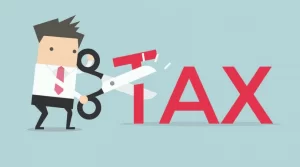Capital gains surplus stripping refers to tax strategies that let you distribute cash from your corporation as a capital gain instead of pulling the cash out as dividends, which are more highly taxed. A Guide to Capital Gains Surplus Stripping for Physicians: A Brief History and Recent Developments.
Here’s one way this tax strategy works, in simple terms. (Please note, however, that this article does not cover all possibilities and should not be considered tax advice. If you wish to pursue this strategy, you should seek professional guidance and take your unique circumstances into account.)
Capital Gains Surplus Stripping for Physicians
You start by creating a new corporation (which we’ll call “Newco”). Your medical professional corporation (“MPC”) then goes through a special transaction where you get different shares of your MPC. You then sell these different MPC shares to Newco at their fair market value in exchange for a note payable. This series triggers a capital gain that you must report on your personal income tax return.
Only 50% of capital gains are taxable. Over time, you can use assets from your original company to repay the note payable (through tax-free inter-corporate dividends to Newco or by combining the two companies). The amounts that you receive on the note payable are not taxable to you.
How much could you save in taxes with Capital Gains Surplus Stripping for Physicians?
Let’s assume your current corporation has a lot of assets and that you want to take out $250,000 to use personally, whether it’s to pay down your mortgage, buy a cottage or spend in other ways.
The following table illustrates how much you would need to withdraw before tax to get $250,000 after tax.
Comparing tax rates: Non-eligible dividends vs. capital gains
| Item | Non-eligible dividends1 | Capital gains |
|---|---|---|
| Top tax bracket rate (federal + Ontario) | 47.74% | 26.76% |
| Required to net $250,000 | $478,380 | $341,344 |
| Amount remaining after tax | $250,000 | $250,000 |
| Difference before costs | n/a | +$137,036 |
By taking the funds out as capital gains instead of dividends, you save $137,036 in personal taxes.
How much would it cost to implement this strategy?
Capital gains surplus stripping is complex and must be carefully planned and executed by tax professionals and lawyers to achieve the desired outcome while mitigating risk. When calculating the potential savings, be sure to include the cost to implement this strategy. .
Costs would include fees for planning memos, incorporation costs, legal fees for execution of notes payable, purchase and sale agreement costs, amalgamation/windups costs, tax compliance costs for all related tax filings, accounting fees and registration costs.
We’ve seen fees ranging from $5,000 to $50,000 and more. Keep in mind that it is important this transaction be done properly.
What’s more, you must be willing to accept tax risk in Capital Gains Surplus Stripping for Physicians
Though your professionals may execute the strategy properly, Canada Revenue Agency (CRA) could still challenge the transactions on several grounds and treat the amounts as taxable dividends. If the CRA is successful in its challenge, you face increased taxes, interest charges and professional costs to deal with CRA.
This article considers the extent to which surplus strips remain permissible under the Act and, in particular, considers the application of subsection 84(2), section 245 (the general anti-avoidance rule [GAAR]), and the specific anti-surplus-stripping provisions in sections 84.1 and 212.1.
Notwithstanding recent court decisions, certain surplus-stripping transactions are still, and should remain, permissible.
For a short time, when amendments to section 84.1 and the addition of section 246.1 were proposed, there was the possibility that permissible surplus stripping was going to be legislatively curtailed, resulting in some collateral damage to other commercial transactions. However, with the subsequent withdrawal of those proposals, the jurisprudence over the past 20 years, summarized above, continues to be highly relevant in determining the framework for permitted surplus-stripping transactions. Although the courts have sought to apply the PUC scheme to transactions involving surplus stripping, there are clear boundaries to its application. Where tax is paid at capital gains rates and the transactions fall outside the bright-line tests delineated in section 84.1, section 212.1, and subsection 84(2), the courts should not find that the transaction or series of transactions violates the PUC scheme and therefore GAAR.
For instance, following examples described below should continue to fit within these guidelines.
Example: An individual, Mr. A, exchanges some of the common shares he holds in his operating company, A Co, for preferred shares and triggers a gain on the transfer by electing under subsection 85(1). Mr. A pays capital gains tax in respect of the gain on the transfer. He subsequently transfers the preferred shares to a holding company, B Co, in exchange for a promissory note. A Co redeems the preferred shares and B Co repays the principal of the note. At all times, A Co continues to carry on its business.
In example, Mr. A pays tax in respect of each share on the exchange of his common shares for preferred shares of A Co, albeit at a capital gains rate rather than a dividend rate. As a result, hard ACB is legitimately created on the preferred shares for the purposes of section 84.1. Therefore, when Mr. A transfers the preferred shares to B Co in consideration for the note, no deemed dividend should result under section 84.1 In a 2006 ruling, the CRA opined on a substantively identical transaction, stating that it would seek to apply GAAR because the transaction constituted “a mechanism for the stripping of surplus of [the] corporation.”110 However, the proposition that a transaction such as the one described above would violate GAAR would disregard the Supreme Court’s pronouncement in Copthorne that there is no anti-surplus-stripping scheme in the Act.
When this strategy is not the best course of action
Capital gains surplus stripping can be beneficial, but it doesn’t live up to the potential described above in all cases. The best-case scenarios are probably where future taxes will be higher than present taxes are, and you are already planning to take significant funds out of the corporation in the short term.
To make the best decision, you need to consider your time horizon, retirement plans and other aspects of your financial plan.
Let’s look at situations that would make this strategy much less advantageous for you than it might appear at first glance.
Time value of money
If you don’t currently need the money, you will be prepaying tax today to potentially save tax in the future. But if your time horizon before needing the money is long, keeping the pre-tax capital invested may be more beneficial financially.
The importance of a high tax bracket
The capital gains surplus stripping strategy assumes that you will always be in a high tax bracket. As an incorporated physician, however, you’ll likely pay lower taxes in retirement than during practice. Your income needs may change, you’ll be able to take tax-effective distributions from your corporation, and there will be more income-splitting opportunities with your spouse or common-law partner. These can all reduce your taxes and can significantly reduce or even eliminate the future tax benefits of capital gains surplus stripping.
Estate planning considerations
As we’ve noted above, the best-case scenario for this tax strategy is where you expect your future taxes to be higher than your present taxes are. This is usually the case when you die, and your estate has to pay taxes. However, a corporate-owned insurance policy can solve this issue with lower tax consequences compared to capital gains surplus stripping.
How to proceed if the strategy would benefit you
If you decide that this strategy would work well for you and your specific situation, there are a few more things to consider as you proceed.
Provincial/territorial differences
It’s possible that your province or territory may not permit Newco to temporarily own professional corporation shares. Legislation in Alberta, Ontario, and Newfoundland and Labrador do not permit this. There may be relevant exceptions, which is where independent legal advice comes in. Nunavut does not have legislation for professional corporations.
The importance of expertise
Because capital gains surplus stripping is a tax strategy, it is often initiated by a specialized tax advisor . However, you should also seek independent legal advice, ideally from a lawyer who’s knowledgeable about medical professional corporations and can draft and execute any of the required legal documents (incorporation documents, purchase and sale agreements, notes payable, etc.). Generally, tax professionals work with legal advisors to plan, advise on and undertake this type of strategy.
Get in Touch with Abdullah CPA to Perform the Capital Gain Surplus stripping for Physicians in Canada






